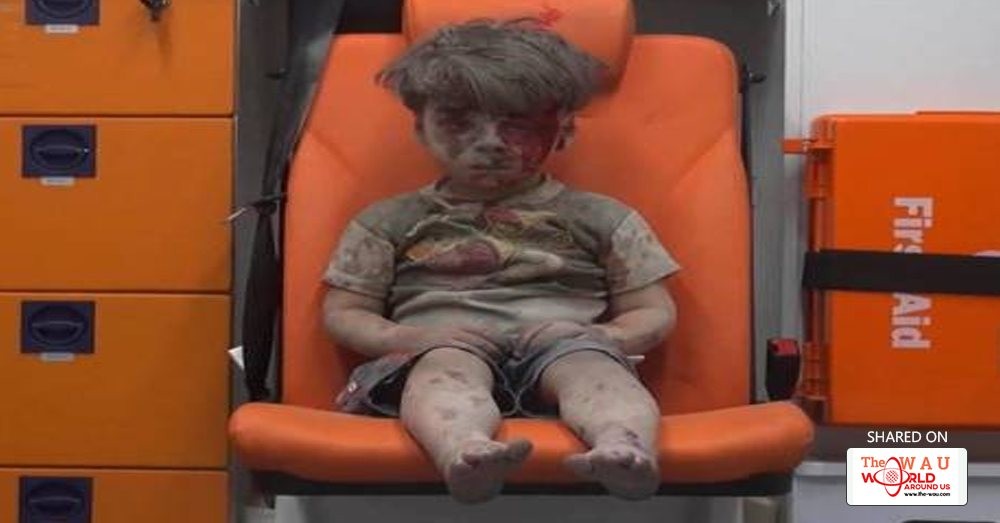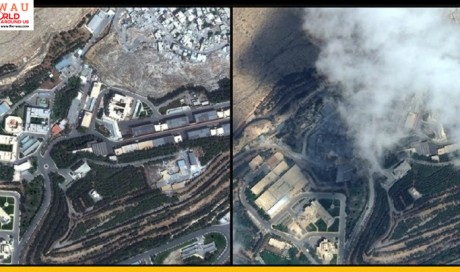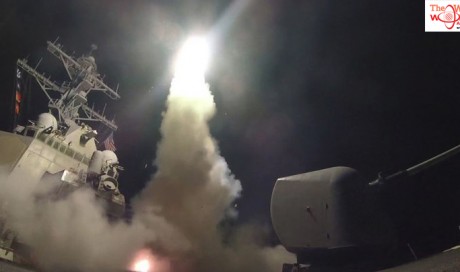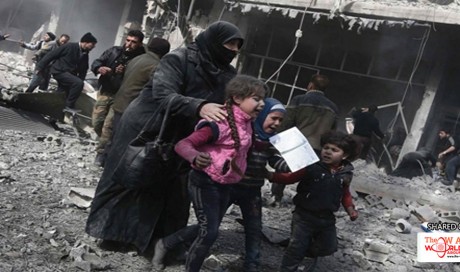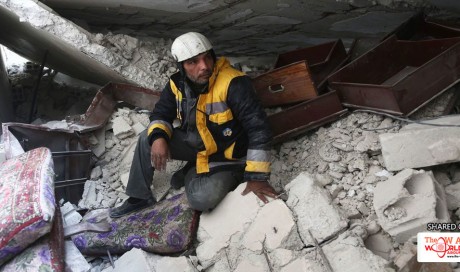The evidence is staggering.
Three tons of captured Syrian government documents, providing a chilling and extensive catalogue of the state’s war crimes, are held by a single organisation in Europe.
A Syrian police photographer fled with pictures of more than 6,000 dead at the hands of the state, many of them tortured.
The smartphone alone has broken war’s barriers: Records of crimes are now so graphic, so immediate, so overwhelming.
Yet, six years since the war began, this mountain of documentation — more perhaps than in any conflict before it — has brought little justice. The people behind the violence remain free, and there is no clear path to bring the bulk of the evidence before any court, anywhere.
More than 400,000 people have been killed in the Syrian war.
Half the country’s population has been displaced. Syrian human rights groups list more than 100,000 people as missing, either detained or killed. Tens of thousands languish in government custody, where torture, deprivation, filth and overcrowding are so severe that a United Nations commission said they amounted to “extermination,” a crime against humanity.
But so far, there is only one war-crimes case pending against Syrian officials: filed in Spain, over a man who died in government custody
No cases have gone to the International Criminal Court. Syria never joined it, so the court’s chief prosecutor cannot start an investigation on her own. The UN Security Council could refer a case to the court, but Russia has repeatedly used its veto power to shield Syria from international condemnation. And even if the council were to take action, President Bashar Al Assad and his top officials are battened down in Damascus, making their arrests difficult, to say the least.
Earlier this month, the outside world was jolted by a chemical attack that killed more than 80 people. The US government attributed the attack to Al Assad’s forces based on flight data and other information. In response, President Donald Trump let loose 59 Tomahawk missiles and called Al Assad an “animal.”
As Al Assad has consolidated his control of Syria’s major cities, some countries that have long opposed him have signalled a new willingness to accept his rule as the fastest way to end the war, encourage refugees to go home and accelerate the fight against rebels. As bad as Al Assad may be, some argue, Syria would be worse without him.
Al Assad’s opponents counter that keeping a head of state with so much blood on his hands perpetuates the war.
The chemical attack was just his most recent atrocity, after years of torture, enforced disappearances, siege warfare and indiscriminate bombing of civilian neighbourhoods and hospitals. The violence will continue as long as Al Assad and his security apparatus remain, his enemies say.
“This is not some abstract human rights issue,” said Laila Alodaat, a Syrian human rights lawyer at the Women’s International League for Peace and Freedom. “This lies at the core of this conflict and of any possible solution or reconciliation. Hundreds of thousands of victims and their families need justice, remedy and assurance that the future will be free from such violations.”
Syria’s war has seen atrocities by all sides. Rebels have shelled civilian neighbourhoods, and Al Qaida and the Daesh militants have deployed suicide bombers, tortured enemies and executed prisoners, often on video.
But the largest number of violations by far has been by the Syrian government and its allies, investigators say, because they wield the apparatus of the state, including a formal military with an air force, extensive security services and networks of prisons.
The Syrian government portrays the conflict as an international conspiracy to destroy the country and equates all opposition with foreign-backed terrorism. It denies that its forces have used chemical weapons or committed atrocities.
In an interview last year, Al Assad said in response to a question from The New York Times that all prisoners are dealt with according to the law and dismissed the accounts of thousands of families who say their loved ones have disappeared without a trace.
“These are allegations,” Al Assad said. “What are the facts?”
The Syrian uprising began with detention and torture in March 2011: A dozen boys were held after one of their friends wrote on a wall, “It’s your turn, Doctor,” suggesting that Al Assad, a former ophthalmologist, would be the next Arab leader to fall. They were arrested, beaten, tortured and forced to sign confessions, one told The Times.
As demonstrations spread, so did arrests. Syria already had a well-documented network of prisons where torture and forced confessions were common. But it expanded to what a UN Commission of Inquiry and human rights groups have described as an industrial scale, holding tens of thousands at any one time. Thousands have been executed in just one facility, Saydnaya prison, Amnesty International found.
Dozens of people over the years have told The Times in detail about their arrests and detentions and the disappearances of their relatives into the maw of the security system, from early 2011 to this month.
Many who have suffered lost hope of redress long ago.
A Syrian man who did four stints of detention and torture for taking humanitarian aid to wounded protesters and rebels recounted his experiences, but then expressed despair that anything would come of it.
“Countries don’t need this evidence — they already know what’s happening,” said the man, Abu Ali al-Hamwi, using his nom de guerre because his mother is in government-controlled Syria.
“We are just pawns on a chessboard. I have women friends who were detained, raped, got pregnant, were tortured with acid.”
He shrugged.
“There is no justice,” he said. “And because there is no justice, there is no hope.”
As the war has dragged on, groups of activists, lawyers and others in Syria and beyond are documenting atrocities in hopes of one day bringing the perpetrators to account.
Some film the aftermath of attacks and compile lists of the dead. Others are experienced war-crimes prosecutors who have begun building cases against Al Assad and other government officials.
The most systematic effort is by the Commission for International Justice and Accountability, a non-profit group that has spent years taking captured government documents out of Syria.
The group, funded by Western governments, now has more than 750,000 Syrian government documents that contain hundreds of thousands of names, including those of top players in Syria’s security apparatus, according to William H. Wiley, the group’s executive director.
So far, the group has prepared eight detailed case briefs against ranking Syrian security and intelligence officials, Wiley said. Seven of them directly implicate Al Assad.
But even those working for war-crimes prosecutions face substantial barriers during a conflict.
The road to the International Criminal Court appears blocked, and European courts have trouble getting access to the accused.
Kevin Jon Heller, a law professor at SOAS at the University of London, said the evidence collected for Syria could be nearly as strong as that used in the Nuremberg trials after World War II.
“The problem as I see it is not so much what mechanism one can use to bring accountability, but how you actually get your hands on the people you want to prosecute,” he said.
Share This Post

